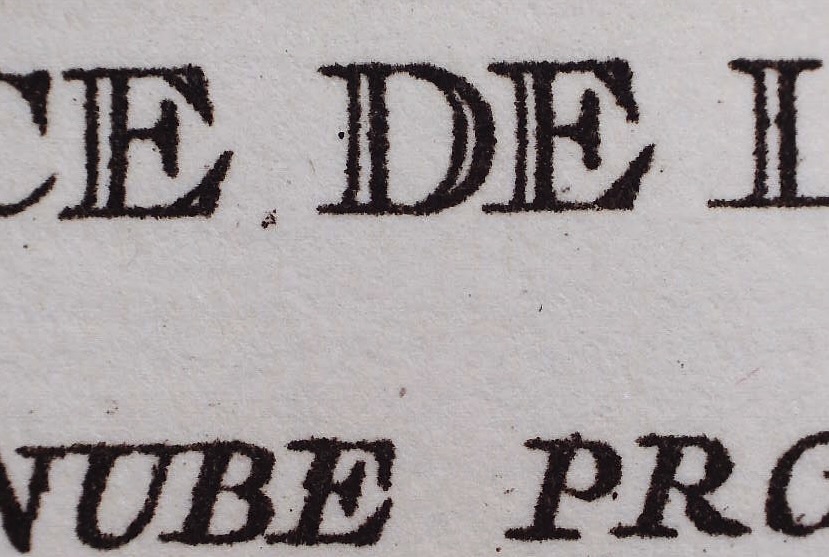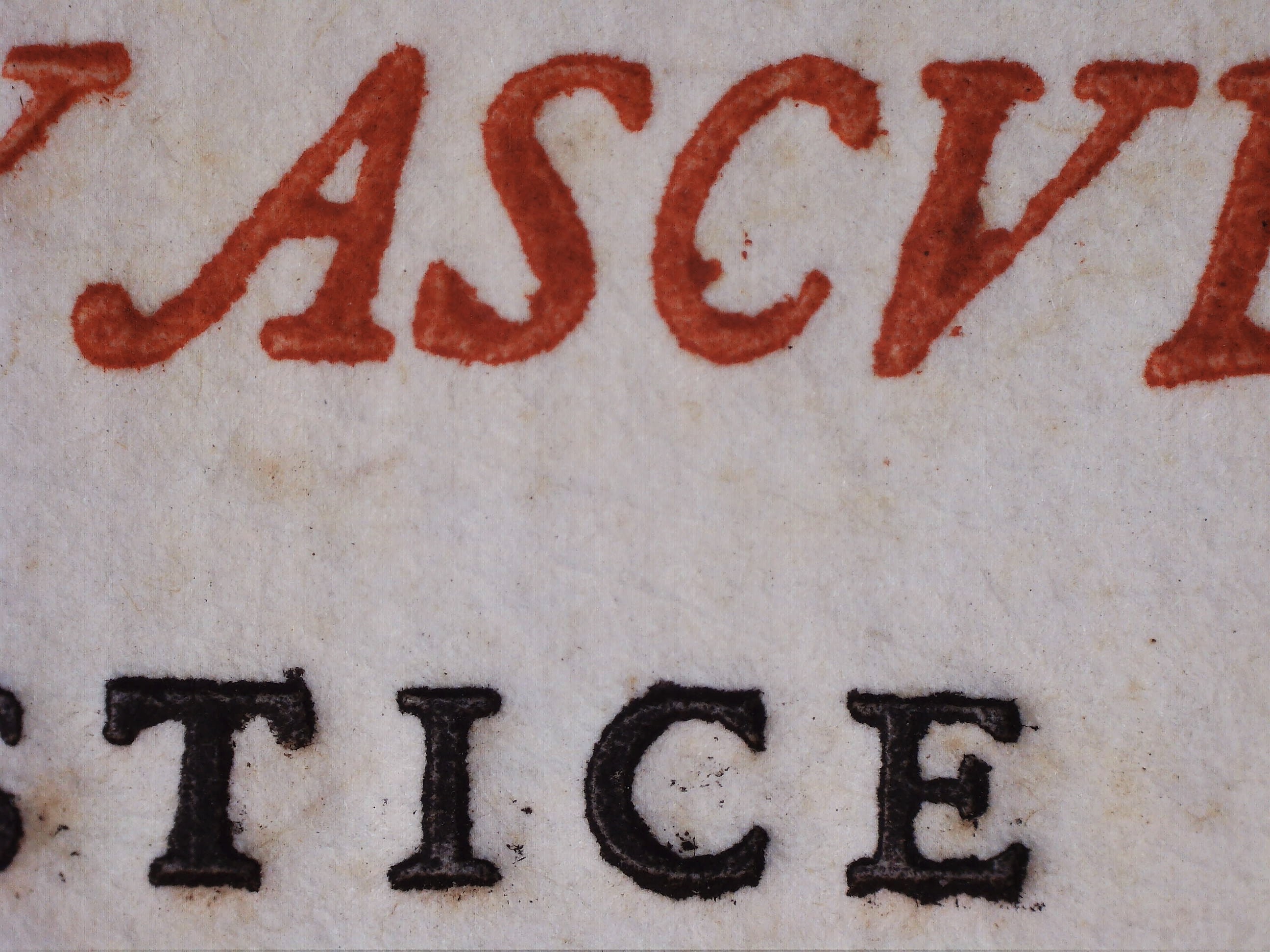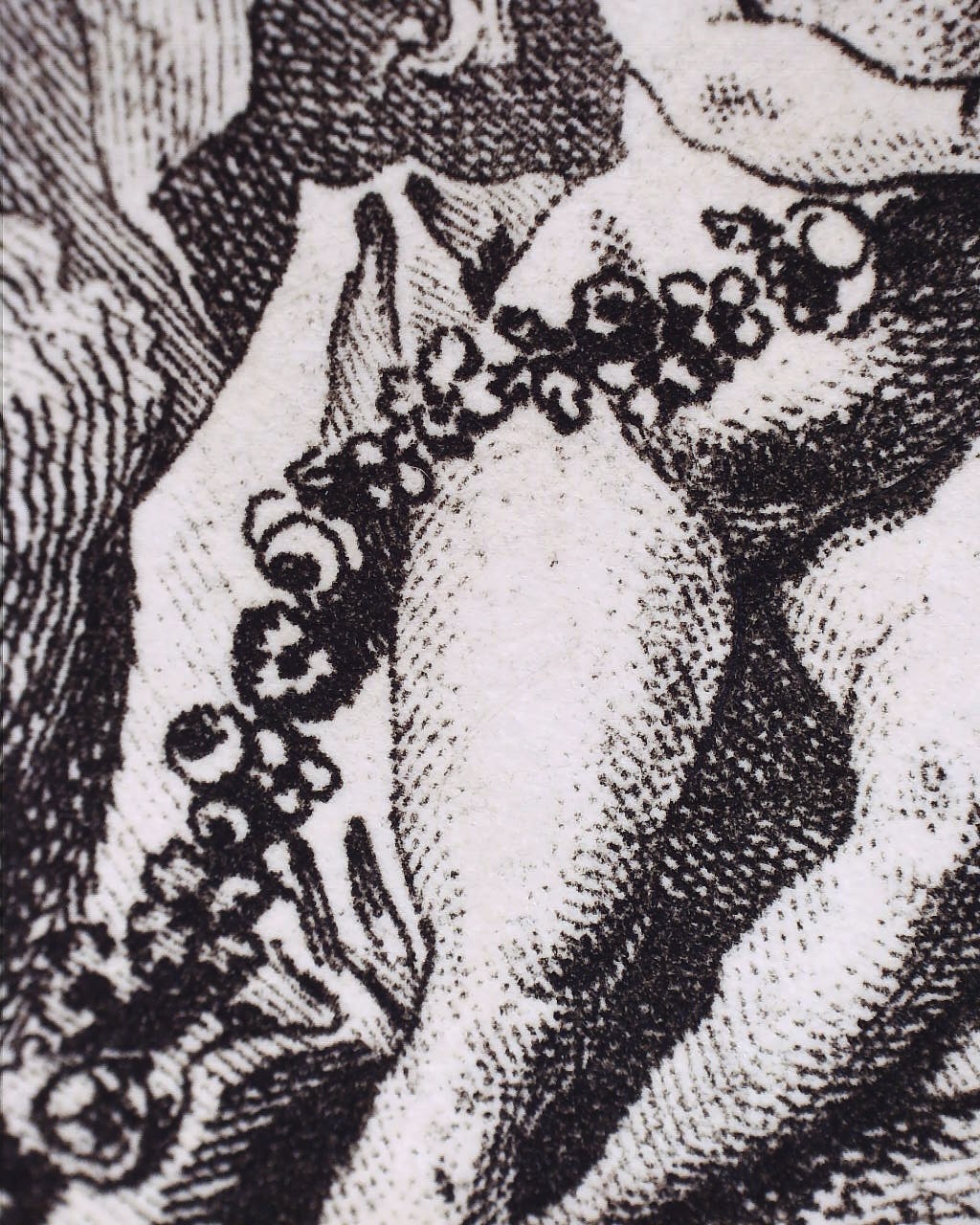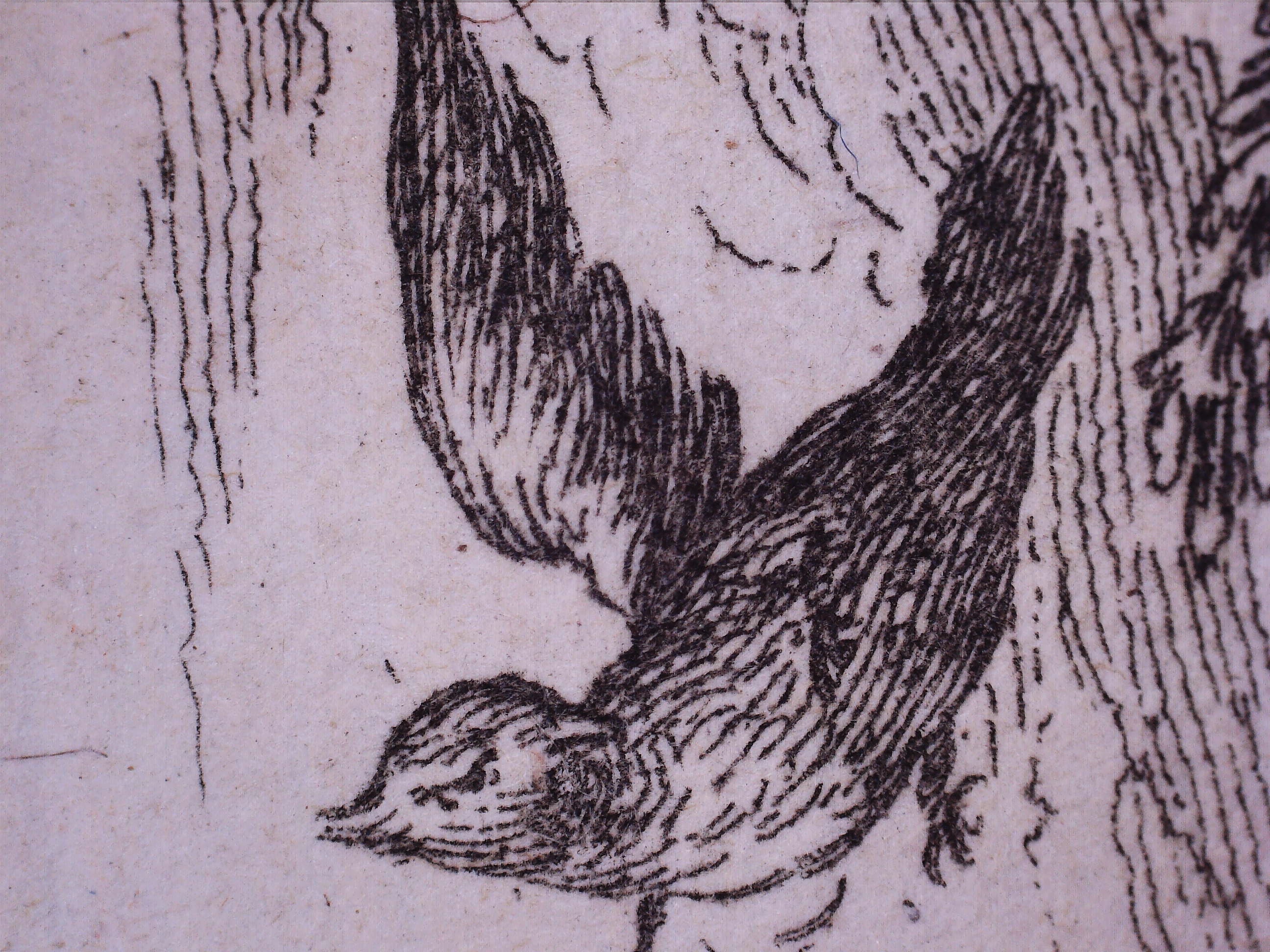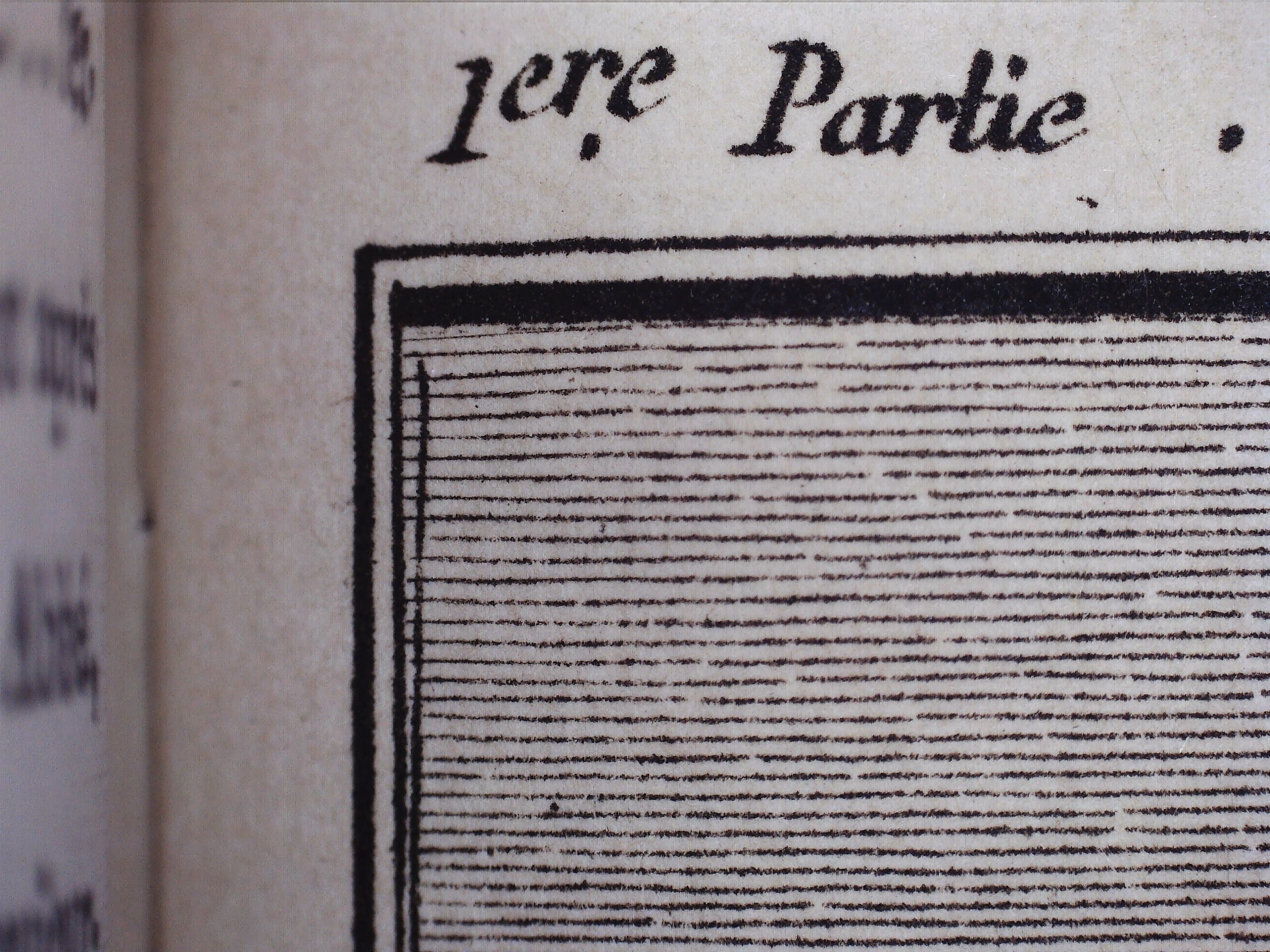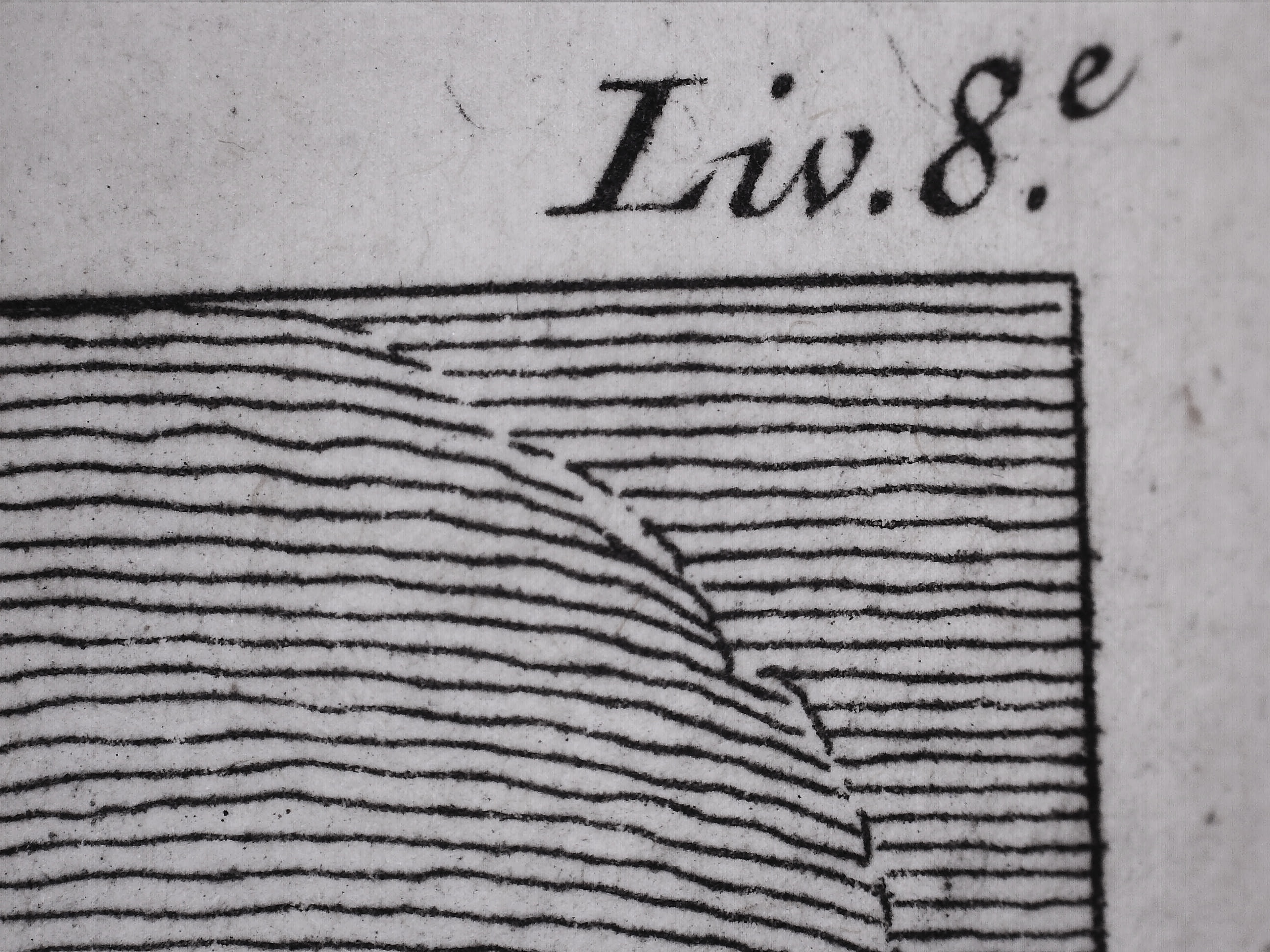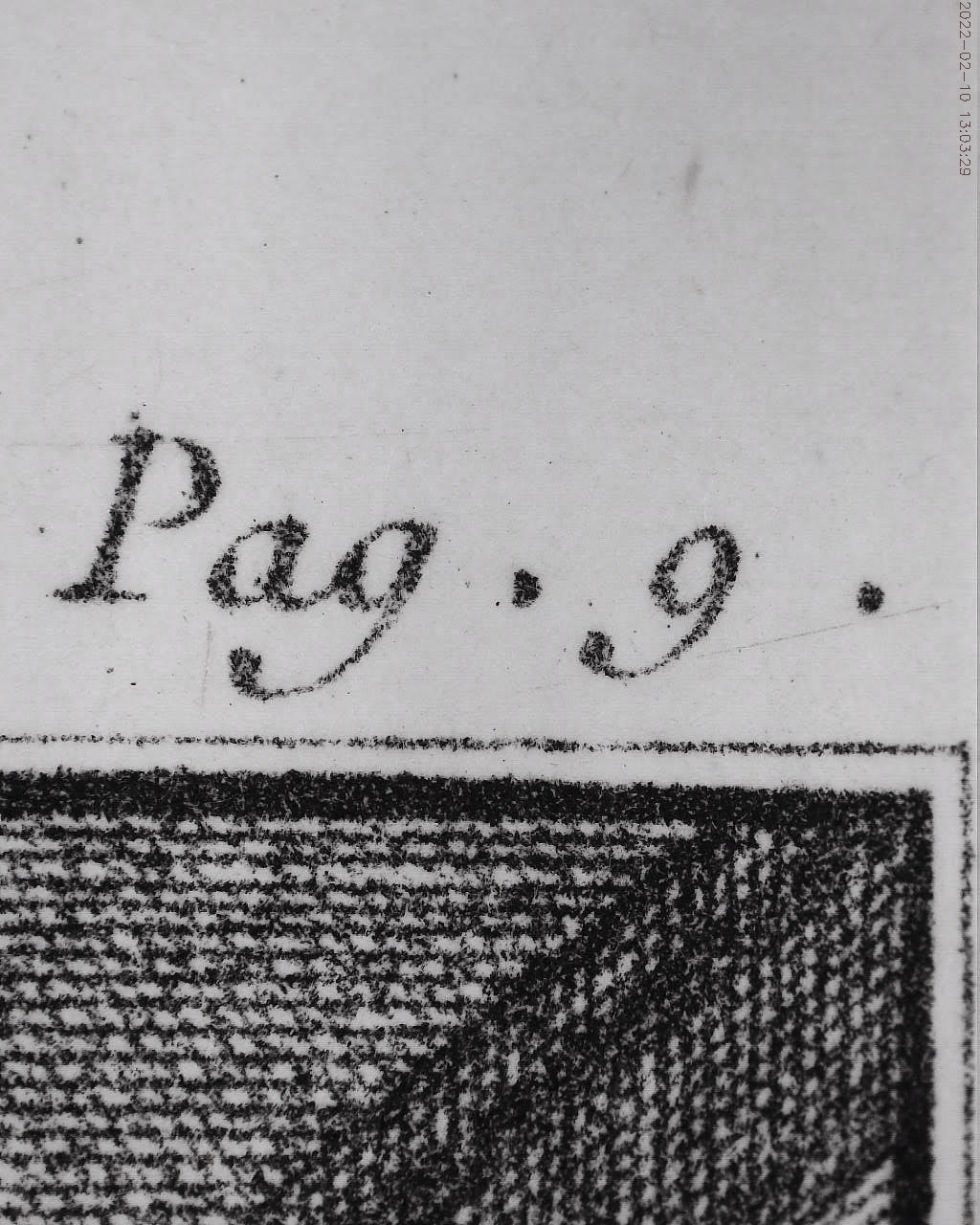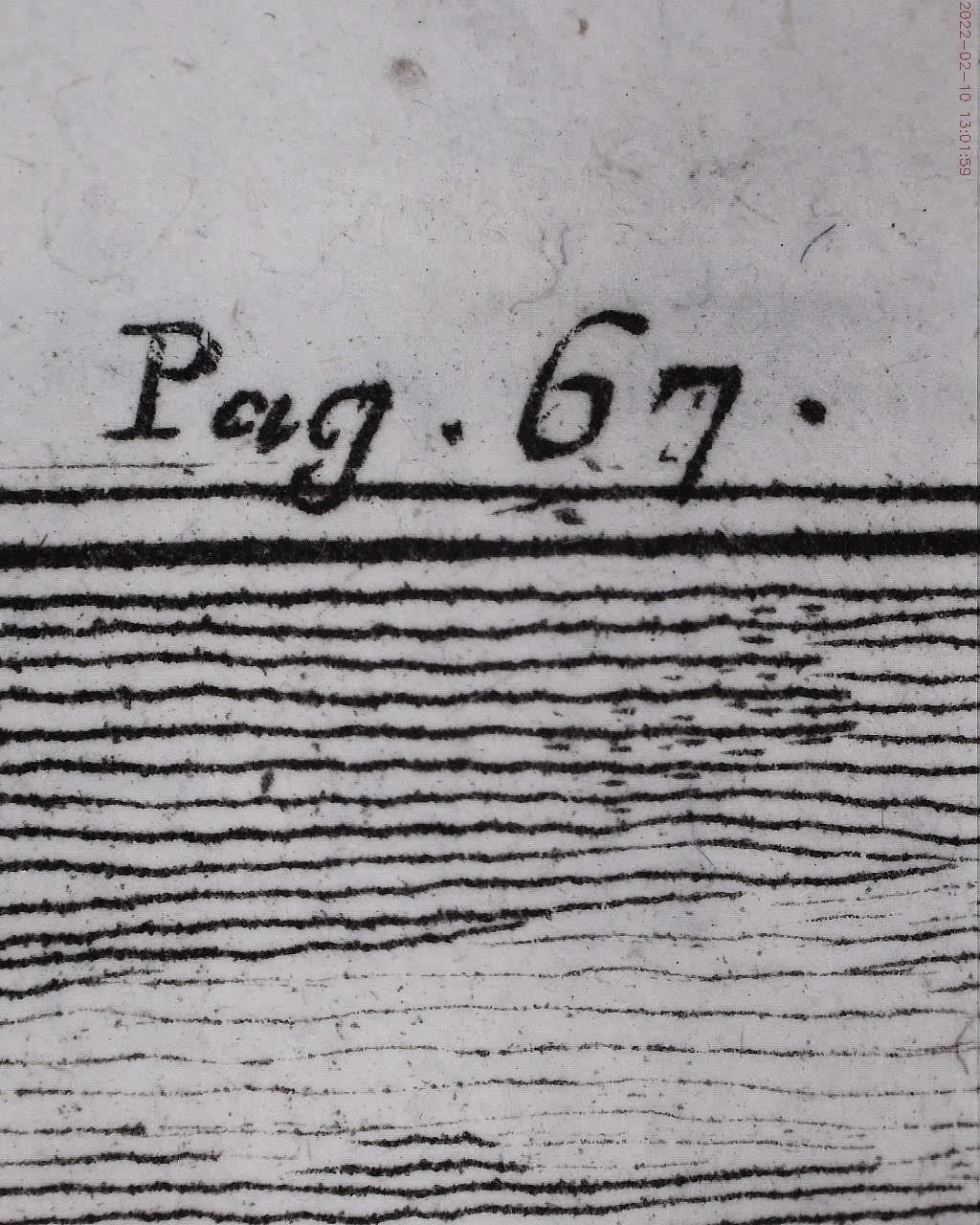Two volumes, 168 x 106 mm each, uniformly bound in faux mottled calf ruled in gilt, marbled endpapers.
Vol. 1: 3 blank leaves of wove paper, 3 blank leaves of laid paper, half-title/blank, blank/frontispiece, ‘engraved’ t.p./blank, both printed on laid paper watermarked “ARCHES A LA | MAIN”; ‘letterpress’ t.p.,/blank, pp.: [1] 2-115 [116 blank], 3 blank leaves of laid paper, 3 blank leaves of wove paper; collated 12mo: π
2 A-I
6 K
4; total 60 leaves plus 16 ‘engraved’ plates, incl. t.p. and frontis.
Vol. 2: 3 blank leaves of wove paper, 3 blank leaves of laid paper, half-title/blank, blank/frontispiece, ‘engraved’ t.p./blank, no watermark, ‘letterpress’ t.p.,/blank, pp.: 1-77 [78 blank], 2 blank leaves of laid paper, 3 blank leaves of wove paper; collated 12mo: π
2 A-F
6 G
3; total 41 leaves plus 24 ‘engraved’ plates, incl. t.p. and frontis.
Dutel (I): A-1089, p. 325: in-8 (probably by size only, no formula suggested), pagination 115 and 77 as here, 2 frontispieces, 2 engraved titles dated 1873, “et 36 belles gravures de Binet”.
Cohen-DeRicci: p. 734 bottom: in-12, no pagination, no formula.
"Thérèse" was offered by a French seller user-75d14f4 on the online auction platform CATAWIKI in December 2021. The seller's description of this two-volume set was: "Re-edition, the date of which I was unable to determine. (London, no name, 1782) 2 duodecimo volumes of 115 and 77 pp., very lovely marbled sheepskin pastiche bindings, gilded triple fillets, adorned spines, black title labels. This classic of 18th-century clandestine erotica was written in 1748 by an author who has remained anonymous, attributed at the time to Montigny, which led to his internment in the Bastille. It is now attributed to the Jean-Baptiste de Boyer, Marquis d'Argens. Edition illustrated with 37 very unrestrained figures, engraved in intaglio after Borel, unsigned."
I should have paid more attention to the first phase, about the re-edition, but I didn't. After a few bidding rounds, I won the book when the hammer price was 2,200 Euros. On the 28th of December, 2021, I paid for this little beauty $2,760. The book arrived a few days later.
The paper's quality and texture, the watermark, the absence of the platemark, and the lack of embossing on the back (text and plates) made me suspect it was a fake. The pages were absolutely flat to the touch! I established clear evidence of a high-resolution 'xerox' copy using Celestron Micro Capture Pro micro-photography. I wrote to the seller and the auction platform, explaining my doubts regarding its authenticity. To prove my point, I include a few micro photos of the "Thérèse" and some books printed at the end of the 18th century. I explained why I considered it a fake and requested a return/refund. After two months of email exchanges, the seller and the platform refused to pay me back. Today is the 2nd anniversary of the purchase. I still have the book. To celebrate my carelessness, I included it in my library to warn fellow book collectors about buying from an unknown dealer via certain online auction platforms.
Ref.: Bamber Gascoigne. How to Identify Prints: A Complete Guide to Manual and Mechanical Processes from Woodcut to Ink. — Thames and Hudson, 1995.
Books used for comparison:
[
LIB-2743.2021] Restif de la Bretonne. Les parisiennes, ou XL caractères généraux pris dans les mœurs actuelles, propres à servir à l’instruction des personnes-du-sexe / 4 vol. — Neufchâtel, et Paris: Guillot, 1787.
[
LIB-3027.2022] [Héliodore d’Emèse]. Amours de Théagènes et Chariclée: Histoire Éthiopique / 2 vol. — Londres [i.e. Paris]: [s.n.], 1743.
[
LIB-3252.2023] [Nicolas Chorier.] Le Meursius françois, ou entretiens galans d’Aloysia, orné de figures. — Cythere [i.e. Paris: Cazin], 1782.
Below is a Xerox copy for comparison.












